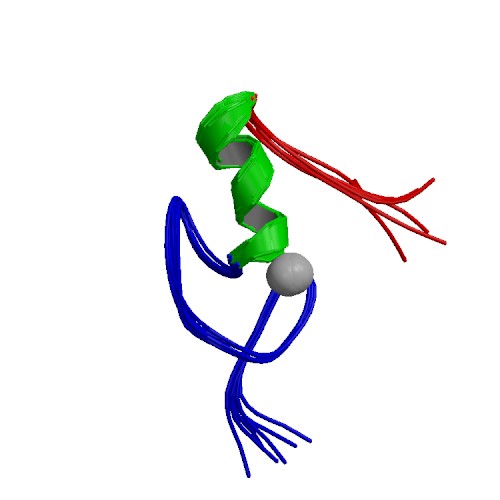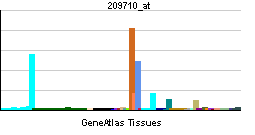GATA2
| GATA binding protein 2 | |||||||||||||
|---|---|---|---|---|---|---|---|---|---|---|---|---|---|
 PDB rendering based on 1gnf. | |||||||||||||
| |||||||||||||
| Identifiers | |||||||||||||
| Symbols | GATA2 ; MGC2306; NFE1B | ||||||||||||
| External IDs | Template:OMIM5 Template:MGI HomoloGene: 32030 | ||||||||||||
| |||||||||||||
| RNA expression pattern | |||||||||||||
 | |||||||||||||
 | |||||||||||||
| More reference expression data | |||||||||||||
| Orthologs | |||||||||||||
| Template:GNF Ortholog box | |||||||||||||
| Species | Human | Mouse | |||||||||||
| Entrez | n/a | n/a | |||||||||||
| Ensembl | n/a | n/a | |||||||||||
| UniProt | n/a | n/a | |||||||||||
| RefSeq (mRNA) | n/a | n/a | |||||||||||
| RefSeq (protein) | n/a | n/a | |||||||||||
| Location (UCSC) | n/a | n/a | |||||||||||
| PubMed search | n/a | n/a | |||||||||||
GATA binding protein 2, also known as GATA2, is a human gene.
The GATA family of transcription factors, which contain zinc fingers in their DNA binding domain, have emerged as candidate regulators of gene expression in hematopoietic cells (Tsai et al., 1994). GATA1 (MIM 305371) is essential for normal primitive and definitive erythropoiesis and is expressed at high levels in erythroid cells, mast cells, and megakaryocytes. GATA2 is expressed in hematopoietic progenitors, including early erythroid cells, mast cells, and megakaryocytes, and also in nonhematopoietic embryonic stem cells. In chicken erythroid progenitors, forced expression of GATA2 promotes proliferation at the expense of differentiation (Briegel et al., 1993). GATA3 (MIM 131320) expression is restricted to T-lymphoid cells and some nonhematopoietic cell types, including embryonic stem cells.[supplied by OMIM][1]
See also
References
Further reading
- Minegishi N (2002). "[Transcription factors regulating hematopoiesis: researches spanning from molecule to whole body]". Seikagaku. 74 (5): 398–402. PMID 12073612.
- Ohneda K, Yamamoto M (2003). "Roles of hematopoietic transcription factors GATA-1 and GATA-2 in the development of red blood cell lineage". Acta Haematol. 108 (4): 237–45. PMID 12432220.
- Dorfman DM, Wilson DB, Bruns GA, Orkin SH (1992). "Human transcription factor GATA-2. Evidence for regulation of preproendothelin-1 gene expression in endothelial cells". J. Biol. Chem. 267 (2): 1279–85. PMID 1370462.
- Page RL, Wharton JM, Wilkinson WE; et al. (1992). "Bidisomide (SC-40230), a new antiarrhythmic agent: initial study of tolerability and pharmacokinetics". Clin. Pharmacol. Ther. 51 (4): 371–8. PMID 1563207.
- Lee ME, Temizer DH, Clifford JA, Quertermous T (1991). "Cloning of the GATA-binding protein that regulates endothelin-1 gene expression in endothelial cells". J. Biol. Chem. 266 (24): 16188–92. PMID 1714909.
- Zhang R, Min W, Sessa WC (1995). "Functional analysis of the human endothelial nitric oxide synthase promoter. Sp1 and GATA factors are necessary for basal transcription in endothelial cells". J. Biol. Chem. 270 (25): 15320–6. PMID 7541039.
- Osada H, Grutz G, Axelson H; et al. (1995). "Association of erythroid transcription factors: complexes involving the LIM protein RBTN2 and the zinc-finger protein GATA1". Proc. Natl. Acad. Sci. U.S.A. 92 (21): 9585–9. PMID 7568177.
- Towatari M, May GE, Marais R; et al. (1995). "Regulation of GATA-2 phosphorylation by mitogen-activated protein kinase and interleukin-3". J. Biol. Chem. 270 (8): 4101–7. PMID 7876160.
- Tsai FY, Keller G, Kuo FC; et al. (1994). "An early haematopoietic defect in mice lacking the transcription factor GATA-2". Nature. 371 (6494): 221–6. doi:10.1038/371221a0. PMID 8078582.
- Briegel K, Lim KC, Plank C; et al. (1993). "Ectopic expression of a conditional GATA-2/estrogen receptor chimera arrests erythroid differentiation in a hormone-dependent manner". Genes Dev. 7 (6): 1097–109. PMID 8504932.
- Towatari M, Kanei Y, Saito H, Hamaguchi M (1998). "Hematopoietic transcription factor GATA-2 activates transcription from HIV-1 long terminal repeat". AIDS. 12 (3): 253–9. PMID 9517987.
- Dasen JS, O'Connell SM, Flynn SE; et al. (1999). "Reciprocal interactions of Pit1 and GATA2 mediate signaling gradient-induced determination of pituitary cell types". Cell. 97 (5): 587–98. PMID 10367888.
- Zhang P, Behre G, Pan J; et al. (1999). "Negative cross-talk between hematopoietic regulators: GATA proteins repress PU.1". Proc. Natl. Acad. Sci. U.S.A. 96 (15): 8705–10. PMID 10411939.
- Wieser R, Volz A, Vinatzer U; et al. (2000). "Transcription factor GATA-2 gene is located near 3q21 breakpoints in myeloid leukemia". Biochem. Biophys. Res. Commun. 273 (1): 239–45. doi:10.1006/bbrc.2000.2947. PMID 10873593.
- Tsuzuki S, Towatari M, Saito H, Enver T (2000). "Potentiation of GATA-2 activity through interactions with the promyelocytic leukemia protein (PML) and the t(15;17)-generated PML-retinoic acid receptor alpha oncoprotein". Mol. Cell. Biol. 20 (17): 6276–86. PMID 10938104.
- Yamashita K, Discher DJ, Hu J; et al. (2001). "Molecular regulation of the endothelin-1 gene by hypoxia. Contributions of hypoxia-inducible factor-1, activator protein-1, GATA-2, AND p300/CBP". J. Biol. Chem. 276 (16): 12645–53. doi:10.1074/jbc.M011344200. PMID 11278891.
- Ozawa Y, Towatari M, Tsuzuki S; et al. (2001). "Histone deacetylase 3 associates with and represses the transcription factor GATA-2". Blood. 98 (7): 2116–23. PMID 11567998.
- Zhang SB, He QY, Zhao H; et al. (2002). "Function of GATA transcription factors in hydroxyurea-induced HEL cells". Cell Res. 11 (4): 301–10. doi:10.1038/sj.cr.7290100. PMID 11787775.
- Tsuzuki S, Enver T (2002). "Interactions of GATA-2 with the promyelocytic leukemia zinc finger (PLZF) protein, its homologue FAZF, and the t(11;17)-generated PLZF-retinoic acid receptor alpha oncoprotein". Blood. 99 (9): 3404–10. PMID 11964310.
- Hirasawa R, Shimizu R, Takahashi S; et al. (2002). "Essential and instructive roles of GATA factors in eosinophil development". J. Exp. Med. 195 (11): 1379–86. PMID 12045236.
External links
- GATA2+protein,+human at the US National Library of Medicine Medical Subject Headings (MeSH)
This article incorporates text from the United States National Library of Medicine, which is in the public domain.
| This article on a gene on human chromosome 3 is a stub. You can help Wikipedia by expanding it. |